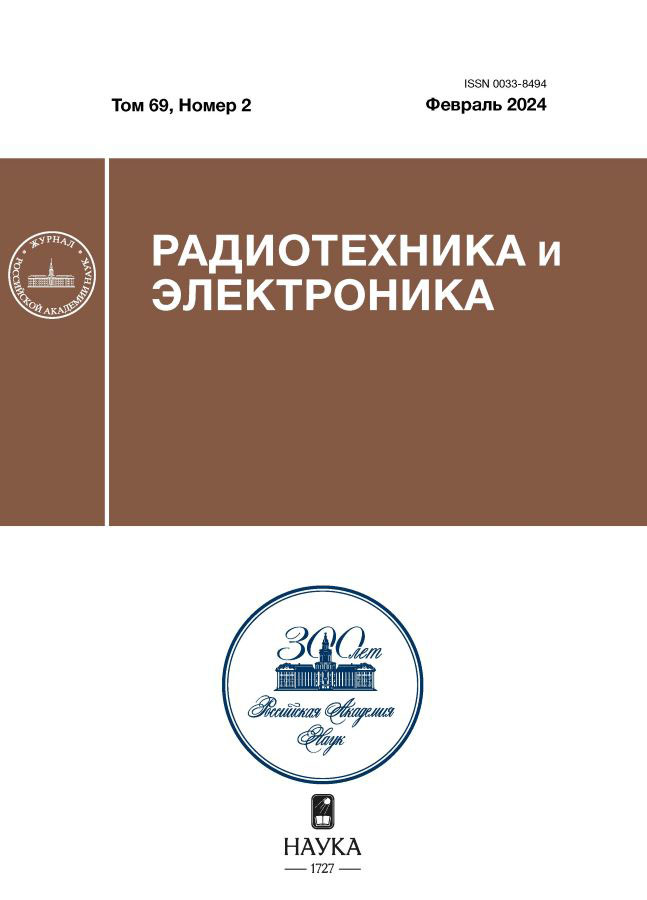Analysis of diode mixers using the method of node potentials in generalized matrix form in the frequency domain. Part 2. Isolation between ports, miscondition effect, noise level
- 作者: Korotkov A.S.1, Golovan O.A.1
-
隶属关系:
- Peter the Great St-Petersburg Polytechnic University
- 期: 卷 69, 编号 2 (2024)
- 页面: 167-179
- 栏目: ТЕОРИЯ РАДИОТЕХНИЧЕСКИХ ЦЕПЕЙ
- URL: https://kazanmedjournal.ru/0033-8494/article/view/650712
- DOI: https://doi.org/10.31857/S0033849424020083
- EDN: https://elibrary.ru/KMJTPK
- ID: 650712
如何引用文章
详细
A method for theoretical analysis of “input-output” and “local oscillator-output” decouplings of three types of diode frequency converters is presented: balanced, double balanced, triple balanced. For two operating modes of the local oscillator – “non-intensive” and “intensive” – the dependences of the “input-output” decoupling of the balanced mixer on the load conductivity and on the amplitude of the local oscillator voltage were obtained. Theoretical analysis and modeling were carried out. It is shown that the error between the calculated results and the simulation results does not exceed 3 dB. Expressions are obtained for errors introduced by the technological spread of diode parameters, which make it possible to estimate the maximum achievable values of the mixer characteristics (transmission coefficient and port isolation). A method for analyzing the noise properties of mixers is presented, the output noise spectra are calculated for each of the circuit elements (input resistance, diodes and output resistance), and analytical expressions for noise coefficients are obtained. Theoretical noise figure estimates are confirmed by simulation results with an accuracy of 1 dB.
全文:
作者简介
A. Korotkov
Peter the Great St-Petersburg Polytechnic University
Email: golovan_oa@spbstu.ru
俄罗斯联邦, St-Petersburgh
O. Golovan
Peter the Great St-Petersburg Polytechnic University
编辑信件的主要联系方式.
Email: golovan_oa@spbstu.ru
俄罗斯联邦, St-Petersburgh
参考
- Korotkov A.S., Golovan O.A. // Radioelectronics and Communications Systems. 2022. V. 65. № 2. P. 81.
- Henderson B. Microwave Mixer Technology and Applications. N. Y.: Artech House, 2013.
- Аверина Л.И., Бобрешов А.М., Шапошникова Ж.В. // Вестн. Воронеж. гос. ун-та. Серия: Физика. Математика. 2011. № 1. С. 5.
- Korotkov A., Golovan O. // 2021 Int. Symp. Signals, Circuits and Systems. Iasi. 15–16 Jul. 2021.N.Y.: IEEE, 2021. P. 9497452. https://doi.org/10.1109/ISSCS52333.2021.9497452
- Roychowdhury J., Long D., Feldmann P. // IEEE J. Solid-State Circuits. 1998. V. 33. № 3. P. 324.
- Darabi H., Abidi A.A. // IEEE J. Solid-State Circuits. 2015. V. 35. № 1. P. 15.
- Nitsch J.B., Solovyeva E.B., Korovkin N.V., Scheibe H.-J. // IEEE Trans. 2008. V. EC-50. № 4. P. 887.
- Головань О.А., Коротков А.С. // Проблемы разработки перспективных микро- и наноэлектронных систем (МЭС). 2022. № 3. С. 190.
- Vitee N., Ramiah H., Mak P.-I., Yin J., Martins R.P. // IEEE Trans. 2020. V. VLSI-28. № 3. P. 700.
- Mollaalipour M., Miar-Naimi H. // IEEE Trans.2016. V. VLSI-24. №6. P. 2275.
- Jiang J., Holburn D.M. // Proc. Europ. Conf. on Circuit Theory and Design. Antalya, 23–27 Aug. 2009. N.Y.: IEEE, 2009. P. 675.
补充文件

注意
Первая часть статьи “Анализ диодных смесителей методом узловых потенциалов в обобщенном матричном виде в частотной области. Часть 1. Коэффициент передачи” опубликована на русском языке в журнале “Известия высших учебных заведений. Радиоэлектроника” и на английском языке в “Radioelectronics and Communications Systems” (2022. Т. 65. № 2).















